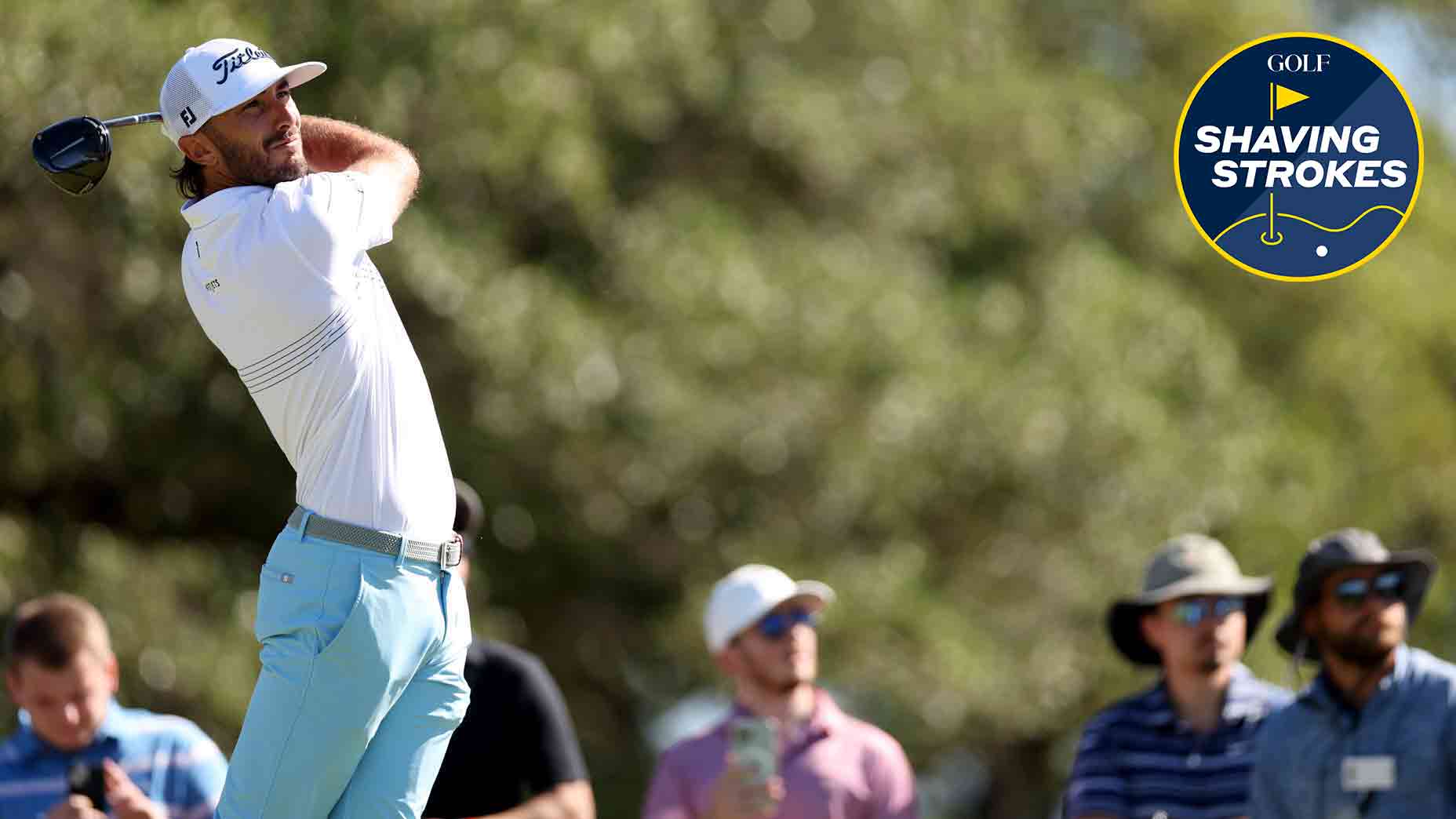Welcome to Shaving Strokes, a GOLF.com series in which we’re sharing improvements, learnings and takeaways from amateur golfers just like you — including some of the speed bumps and challenges they faced along the way.
How many times have you mishit a shot at the range and just immediately grabbed for another ball, almost as if to wipe that result out of your memory? It probably happens a lot.
But just like you’d stare down a flush shot that has a nice little draw to it, you should be paying close attention to the ones that end up poorly, too.
Why? Because in the words of golf instructor David Kuhn, “the ball knows.”
“The golf ball is a big blabbermouth. It can’t keep a secret and wants to tell you everything you need to know about your last swing,” says Kuhn.
So the real question is this: Are you listening?
“I watch people on the range miss shot after shot, and after each one, the player immediately turns away from the ball in flight to rake over another ball,” adds Kuhn. “They have this delusion that things will miraculously change on the next swing…but it rarely does. Poor contact, erratic trajectories, and little control of distance and direction continue to plague their games.”
This is where Kuhn says players need to go through their pre-shot process, dial in their swing focus, and finish in a complete and balanced finish, watching the ball’s final result to process its message.
“That’s what the best ball-strikers do, and they do it for a reason,” he proclaims.
3 drills to improve your clubhead path
“In his book, The Natural Golf Swing, the late Canadian great George Knudson discusses the importance of finishing in balance and watching the ball flight,” Kuhn explains. “While practicing as a teen, Knudson focused on the clubhouse flagpole some 500 yards away. This mindset pulled his attention away from the ball and allowed him to swing through impact to the pre-selected finish position — which he called the ‘best seat in the house.’
“From there, in perfect balance, he would watch the ball, learning all he could from its flight.”
So the next time you’re at the range, work on beginning and ending in balance, following the entire flight of the ball in order to absorb its message.
Adds Kuhn, “The ball is talking to you, and if you listen, it’ll tell you about your clubhead path and clubface alignment. Control those, and you’ll control your game.”
By using Kuhn’s three drills below, you can do just that!
Learn how to sit in the ‘best seat in the house’
Practice hitting balls with a full commitment to do the following on each and every shot. Make sure you commit to 10 shots in a row, and then build from there until it becomes a habit. Regardless of the quality of your strike, get to a full and balanced finish until the ball lands. I like to tell players to count to two; “one-thousand-one, one-thousand-two.”
Once the ball lands, or you’ve finished counting to two, bring your arms, hands, and club back down in front of your chest, making sure the club’s shaft is in a vertical position. Remain there for another two-count. This is what the great George Knudsen called the ‘best seat in the house.’
Applying these principles to all of your shots will help you solidify a balanced and solid finish, and will train you to complete each swing the right way.
Swing smoothly and complete your finish
Place an alignment rod on the ground about six feet in front of your golf ball and on your target line. Commit to hitting 10 shots in a row, making sure you swing to the top of your backswing, swivel your head, and affix your eyes on the alignment rod that’s in front of the ball.
With your eyes on the alignment rod, swing through the ball to a fully balanced finish for a two-count. Continue with the exercise until you can hit balls like this in a full swing motion without any pauses.
By applying these principles, it will allow you to make a smooth and complete motion from the top to the finish.
Check the stability of your lead side
Practice making half-swings, three-quarter swings, and then full swings — both with and without balls — focusing on unweighting your rear foot. To do this, swing to a balanced finish, then simply lift your trail foot off the ground, holding the weight on your lead leg for a three-count.
Repeat this procedure several times with half- and three-quarter swings, then increase the difficulty by executing a full swing. Performing this drill will train you to effectively shift pressure to your lead side, allowing you to feel a stable lead leg that’s needed for improved ball-striking.
